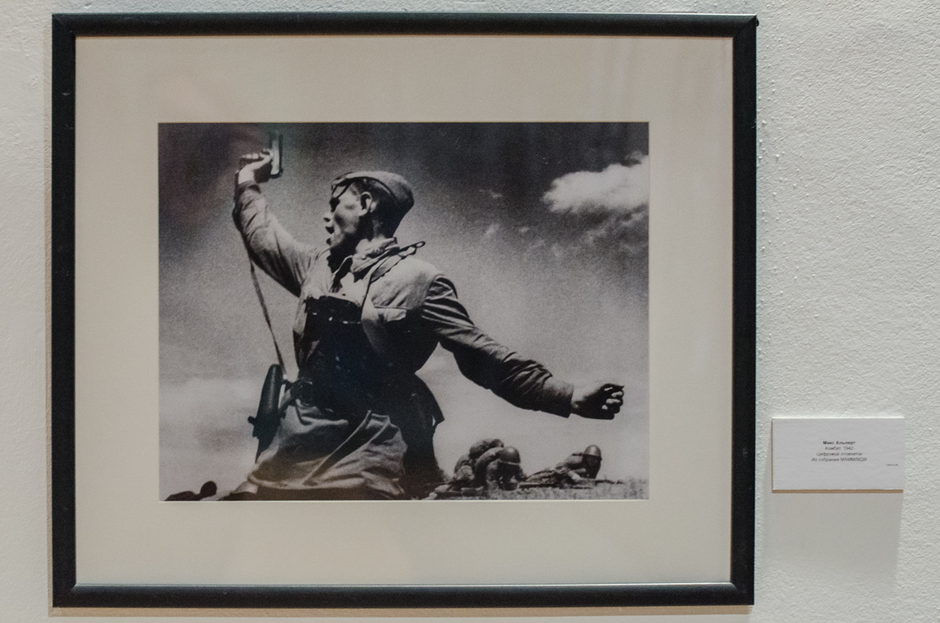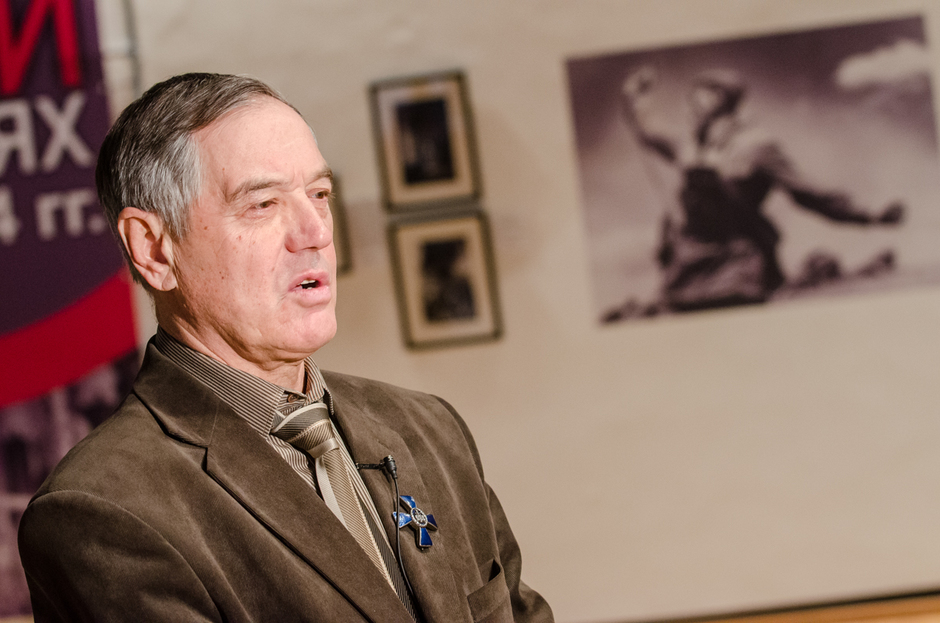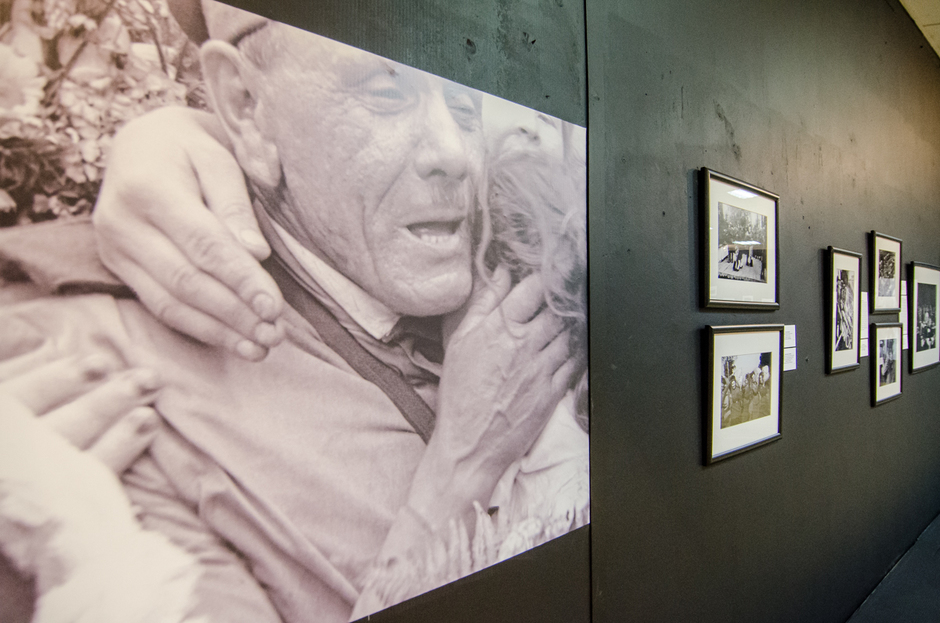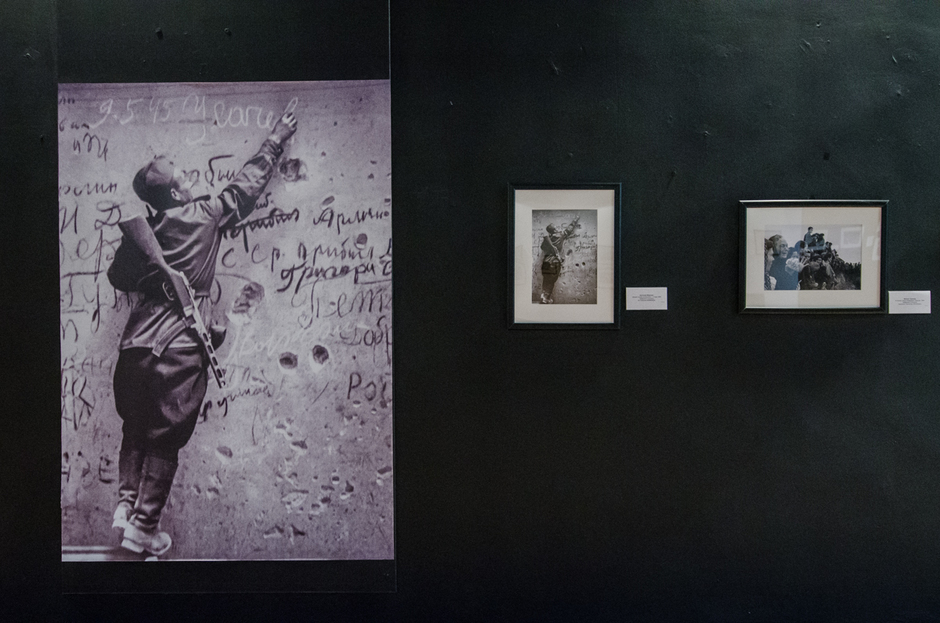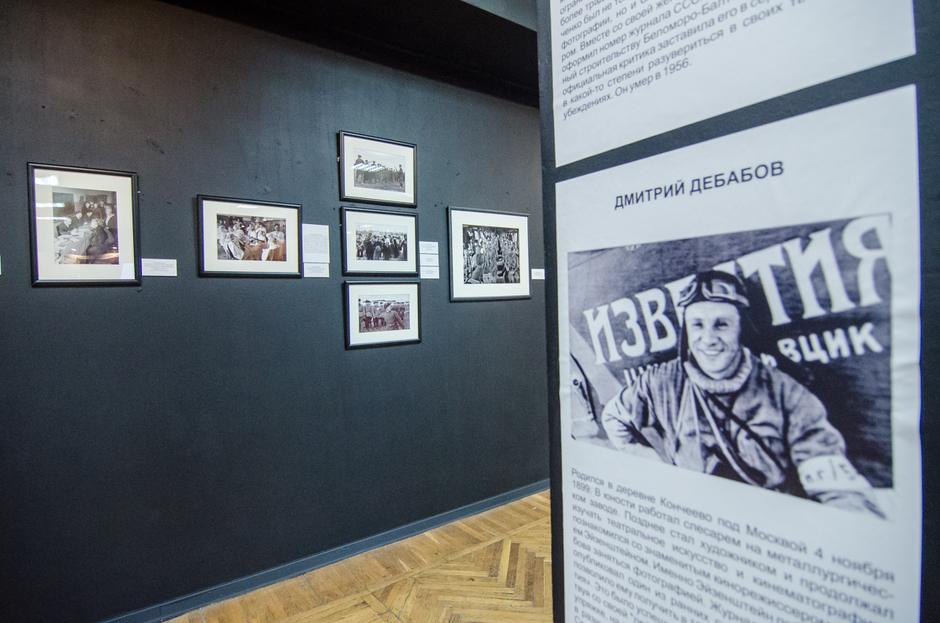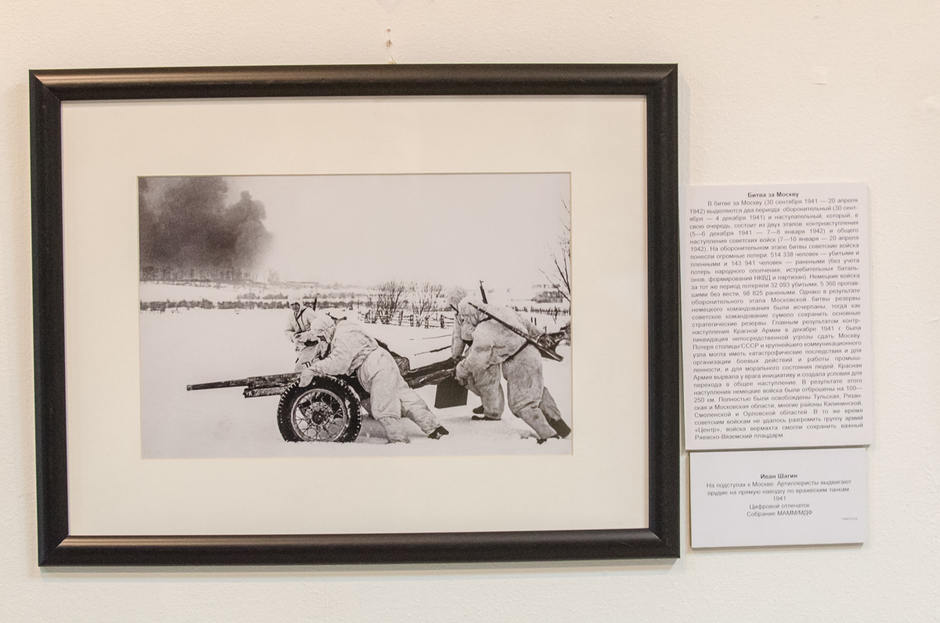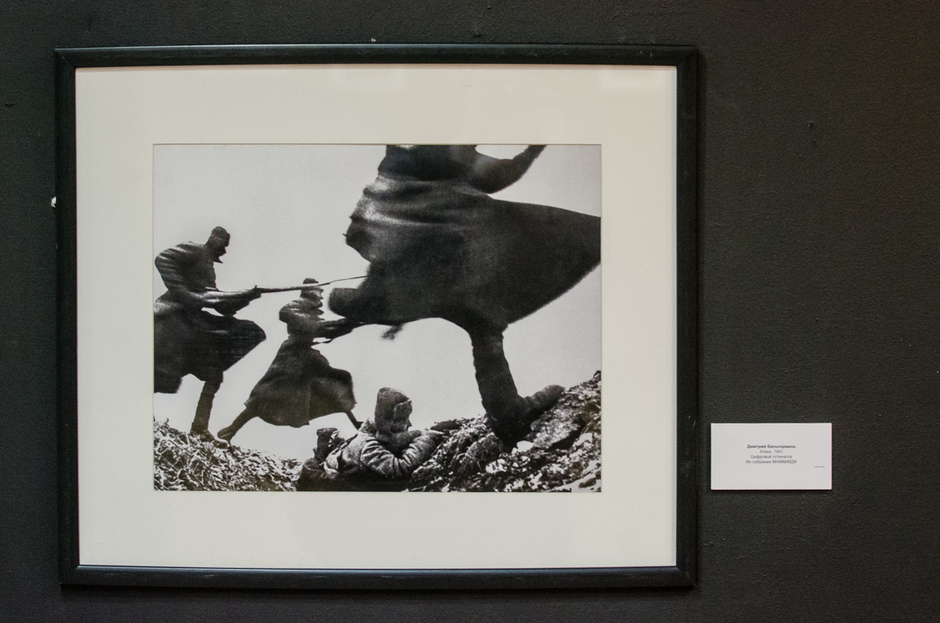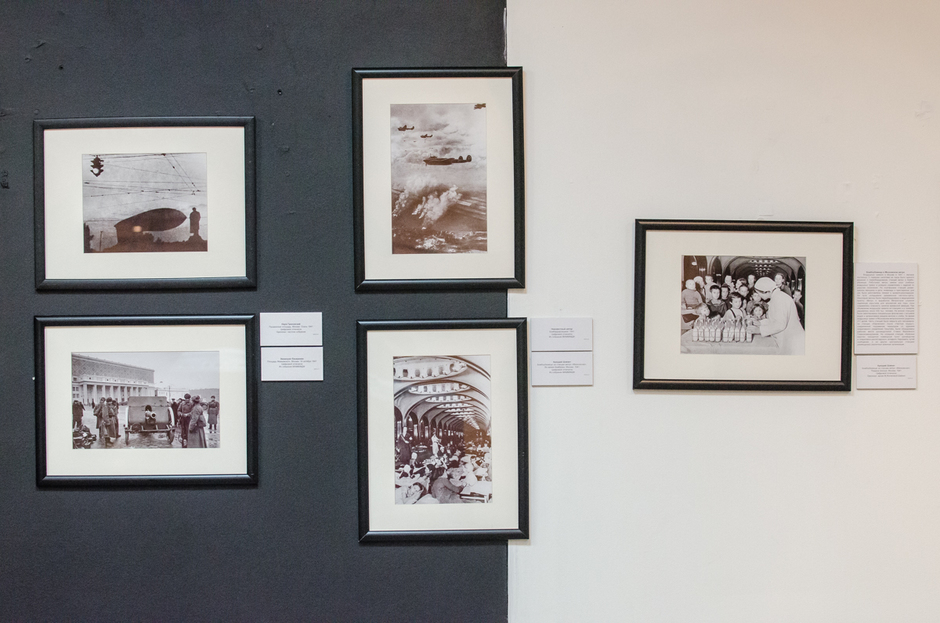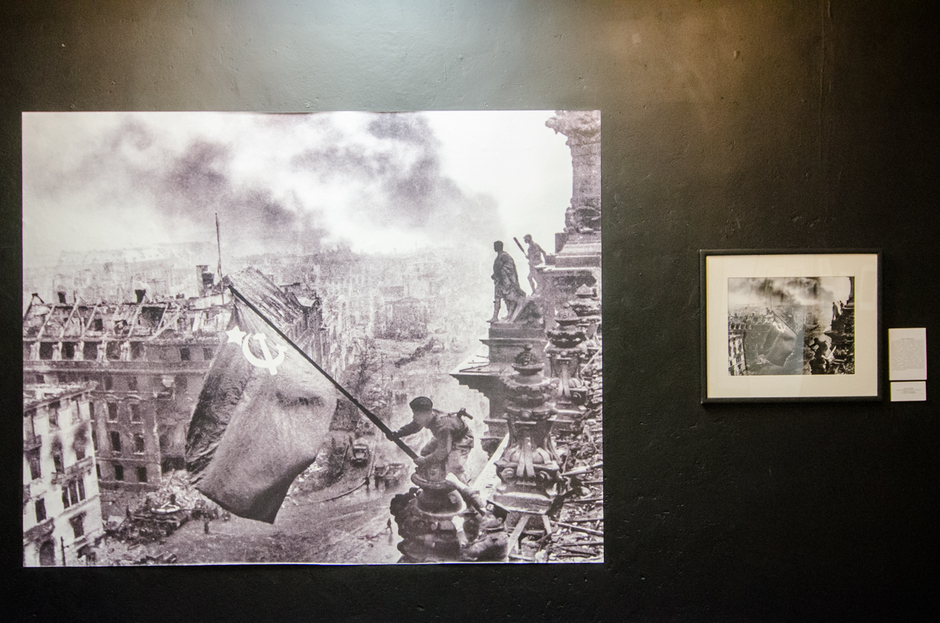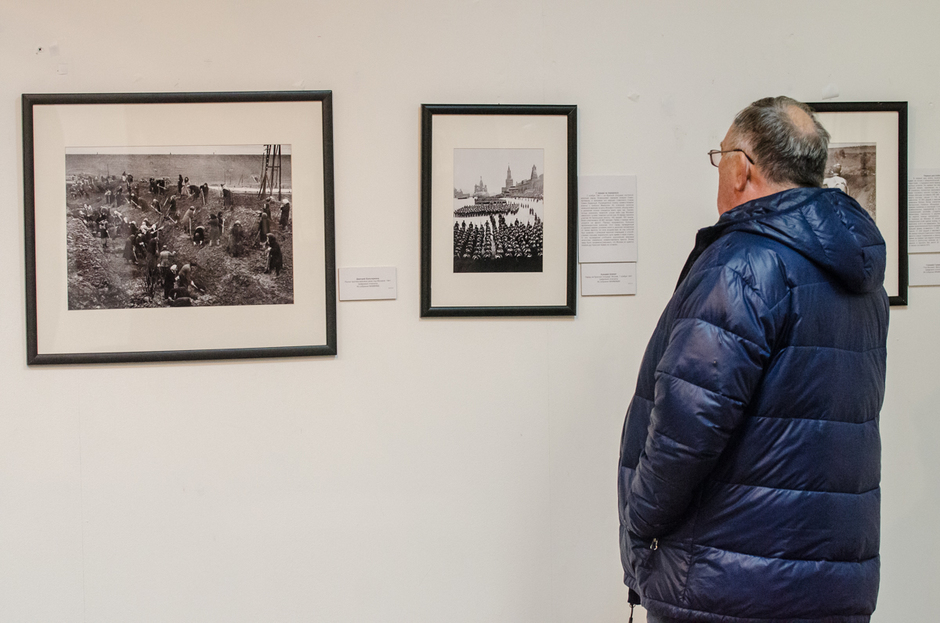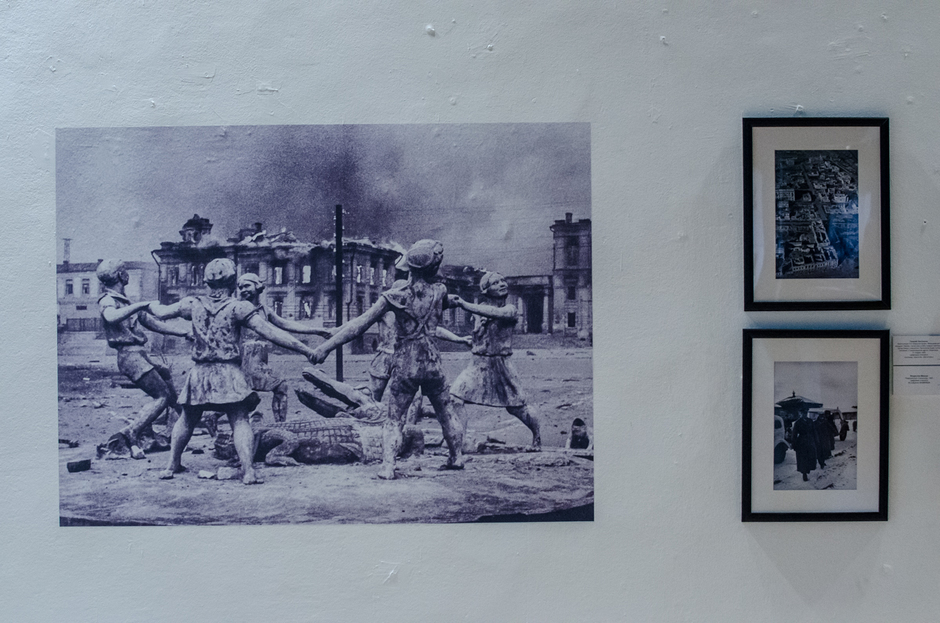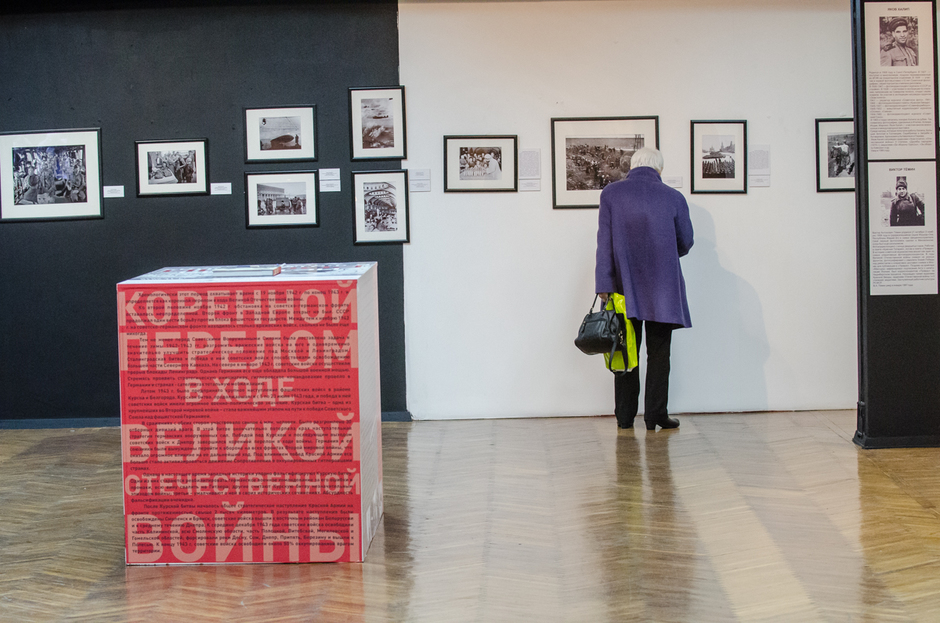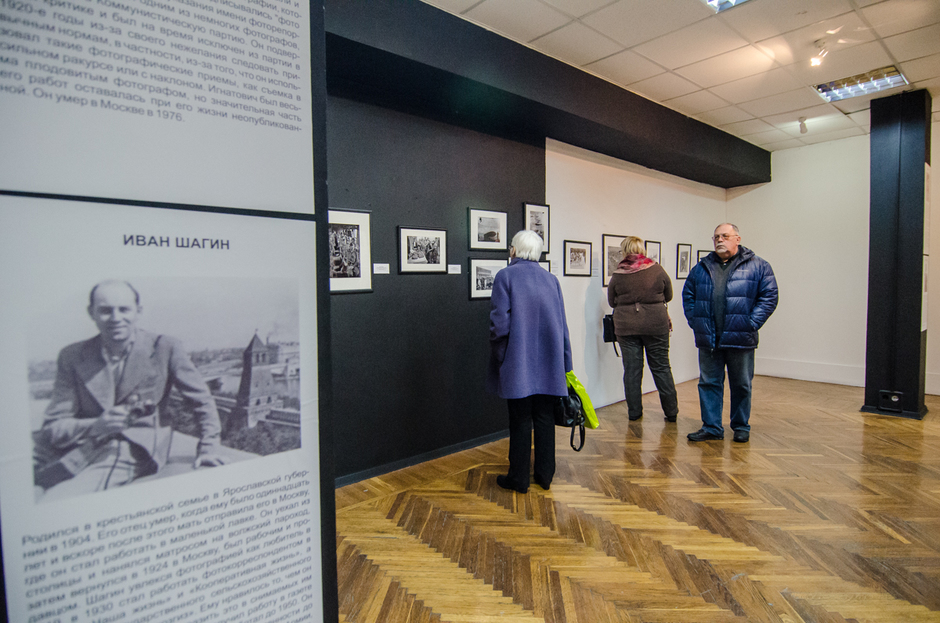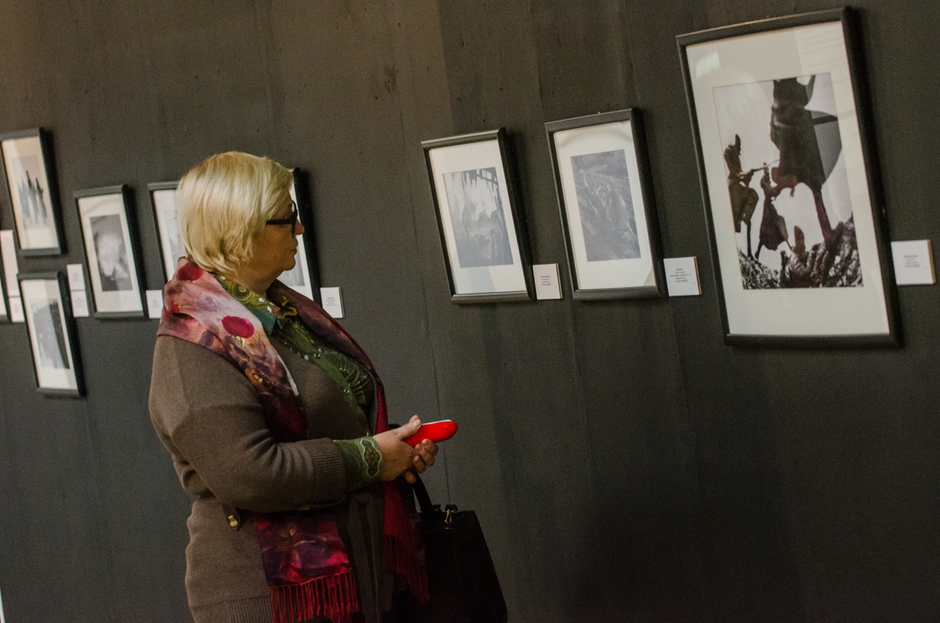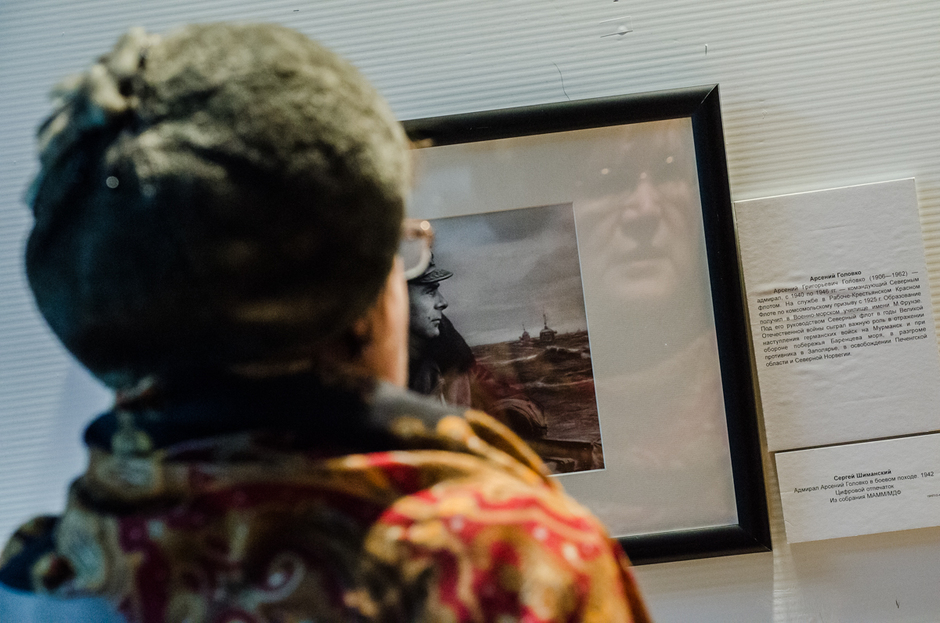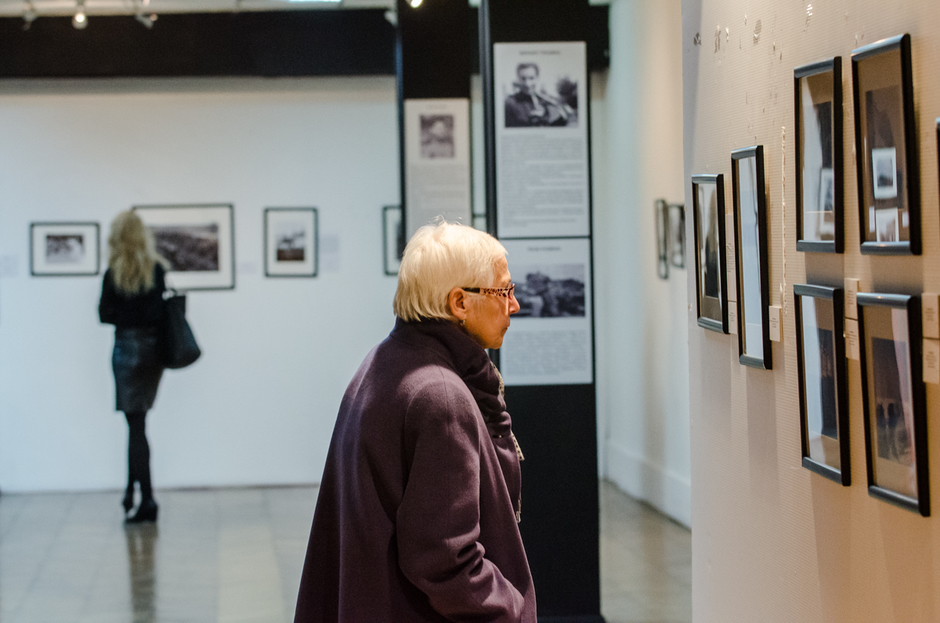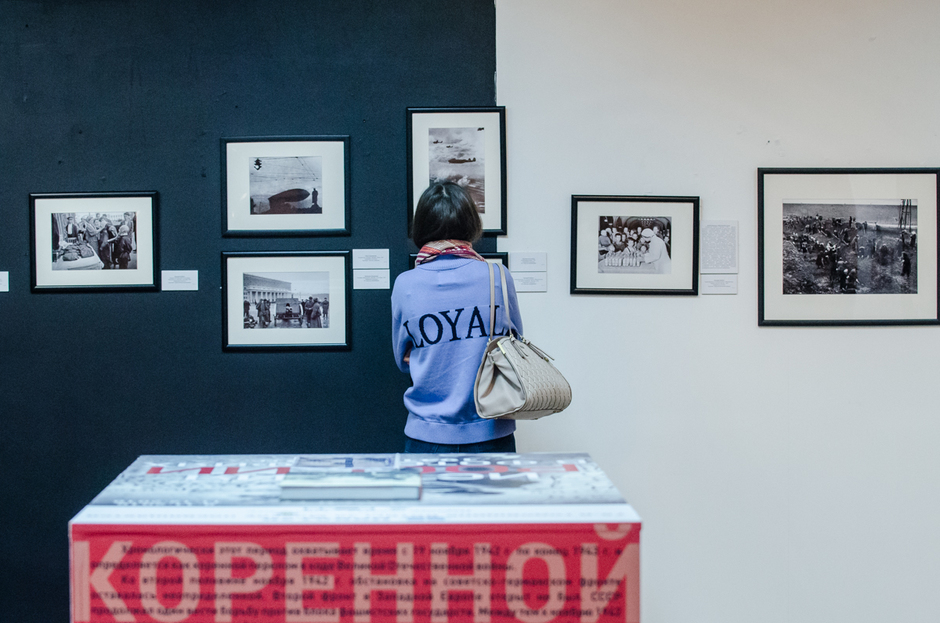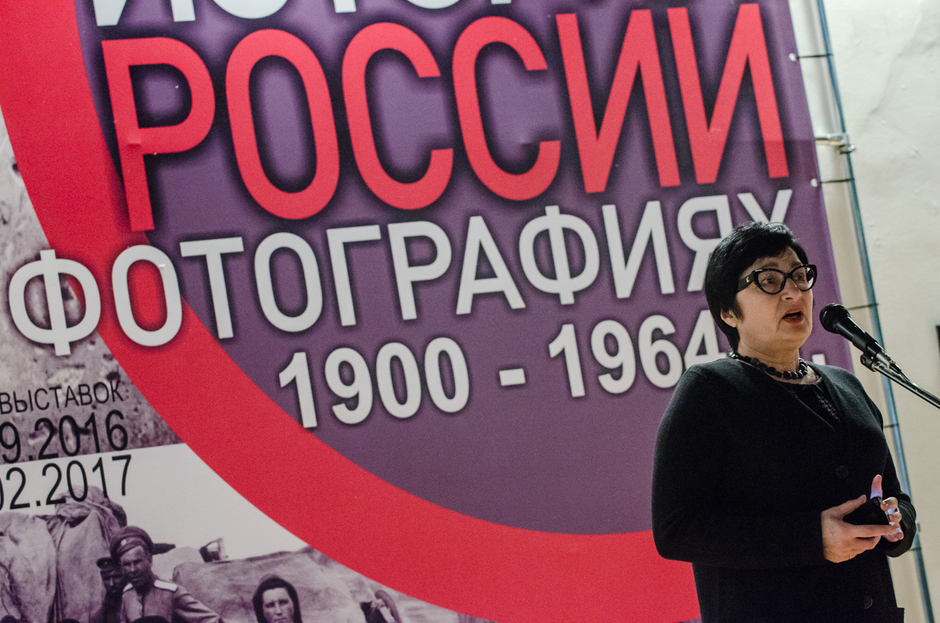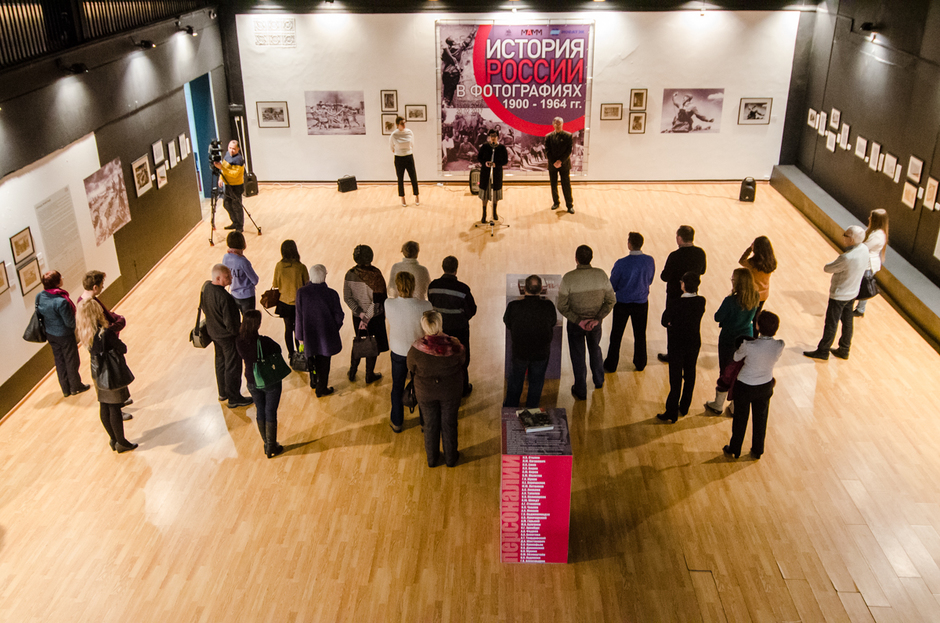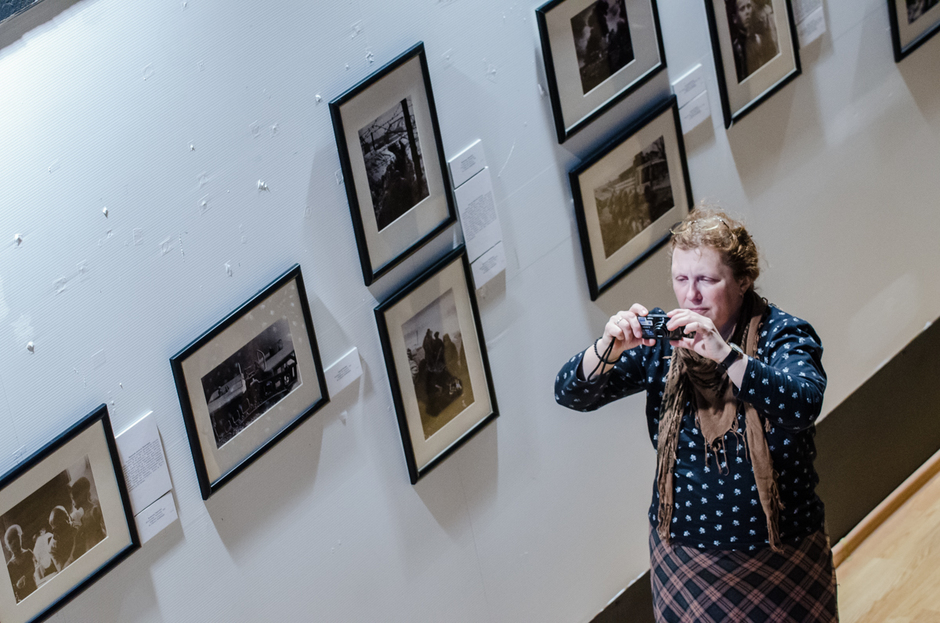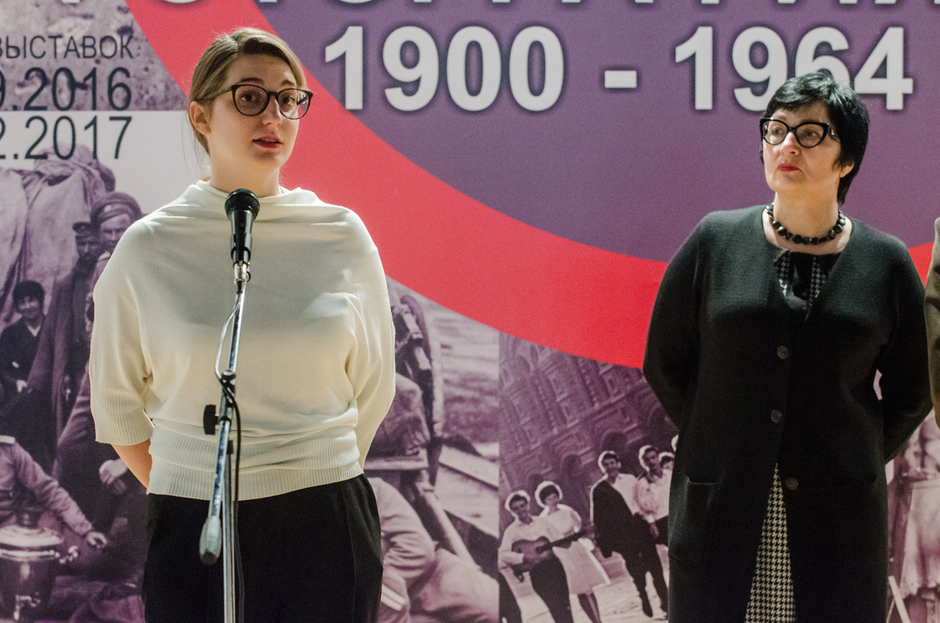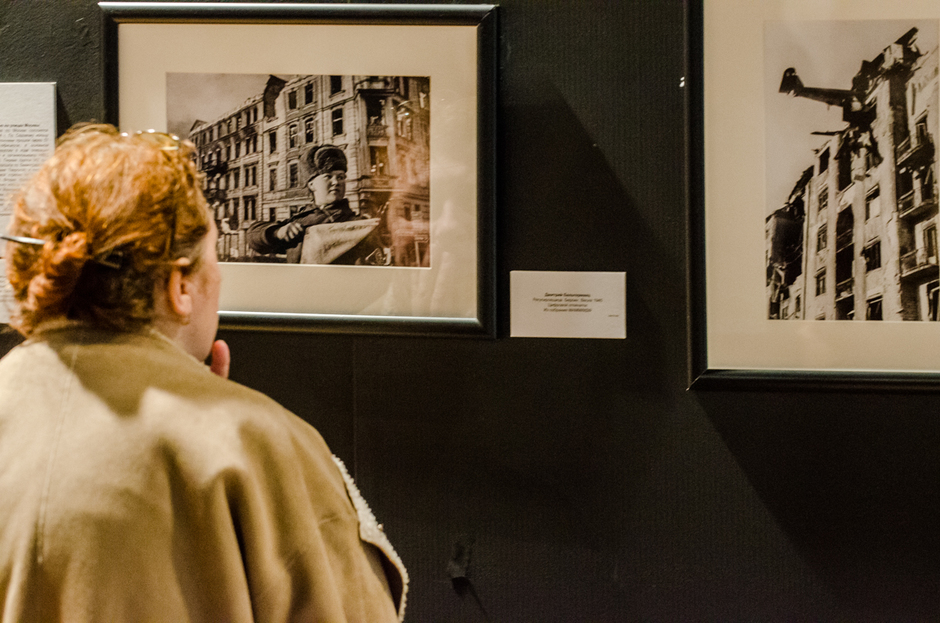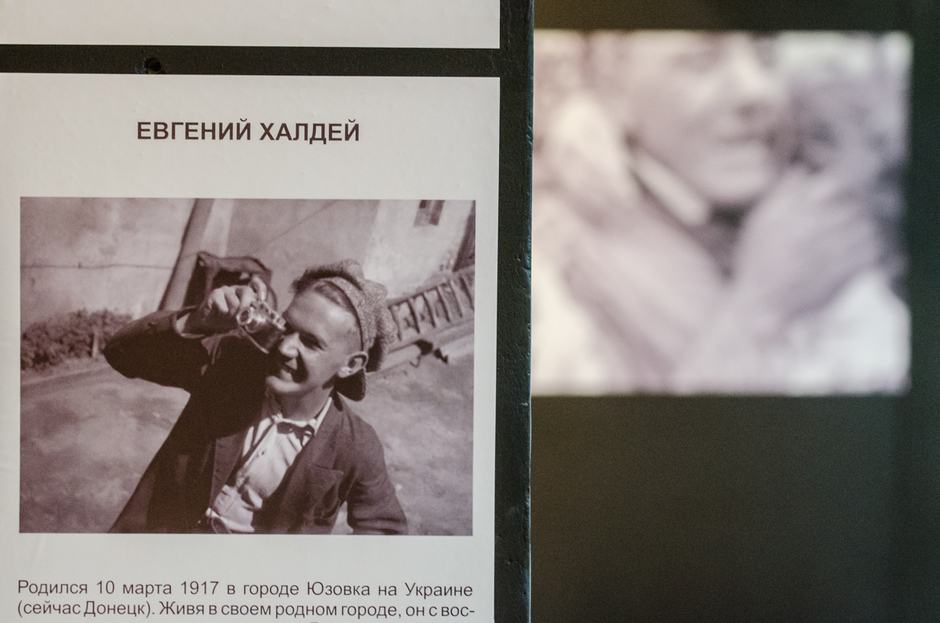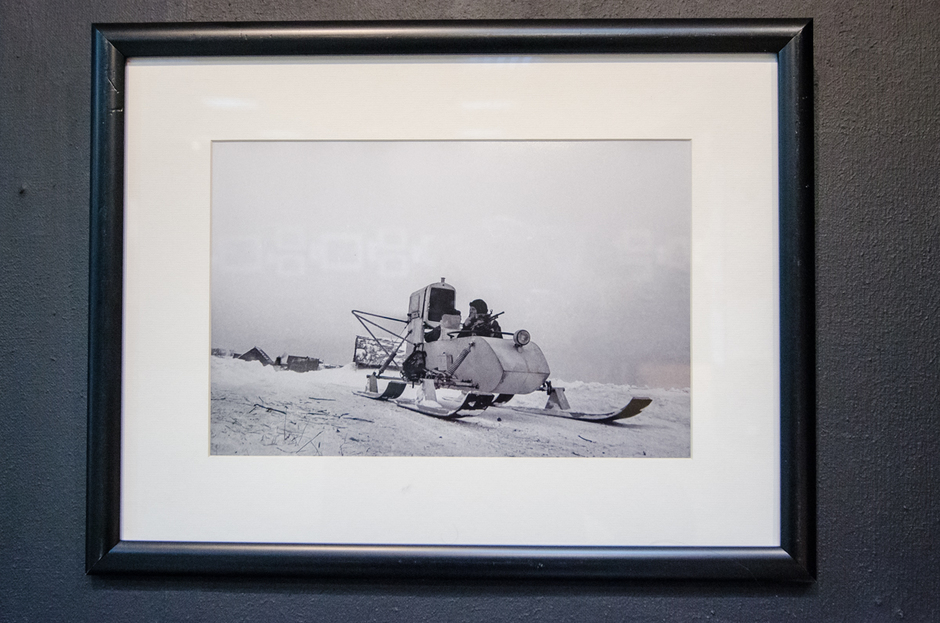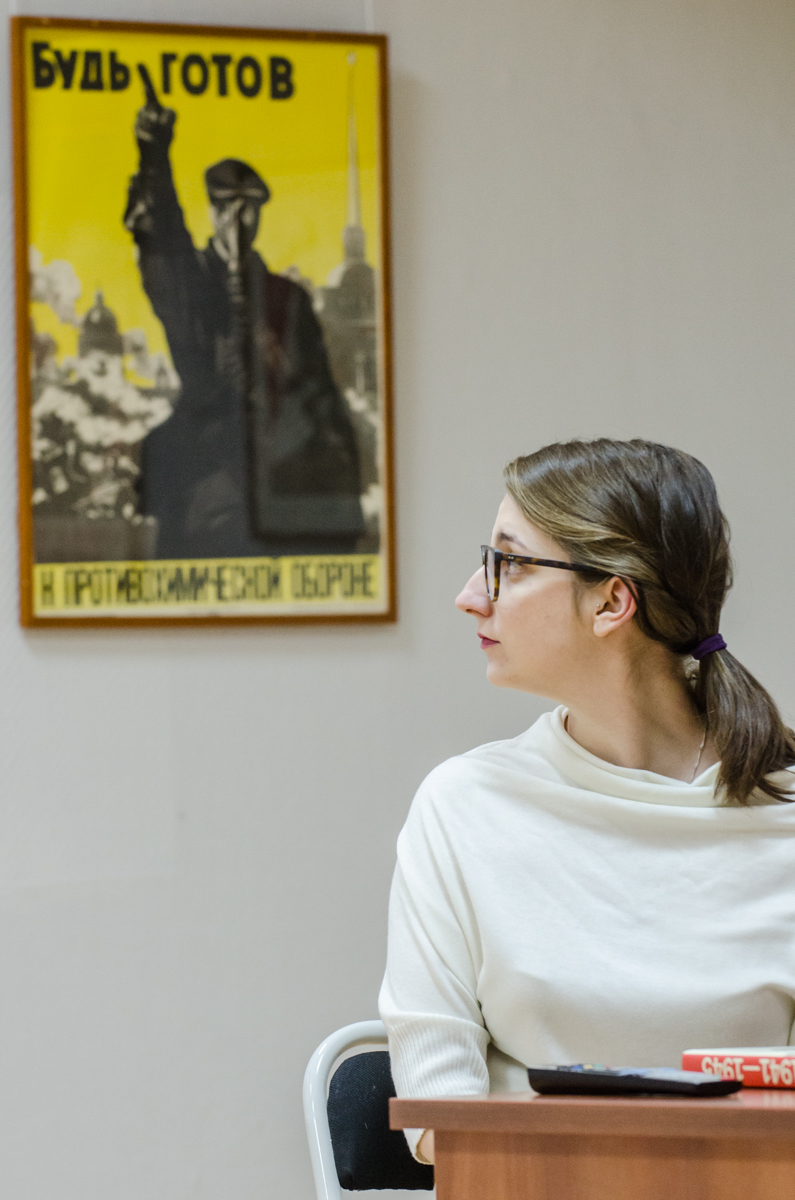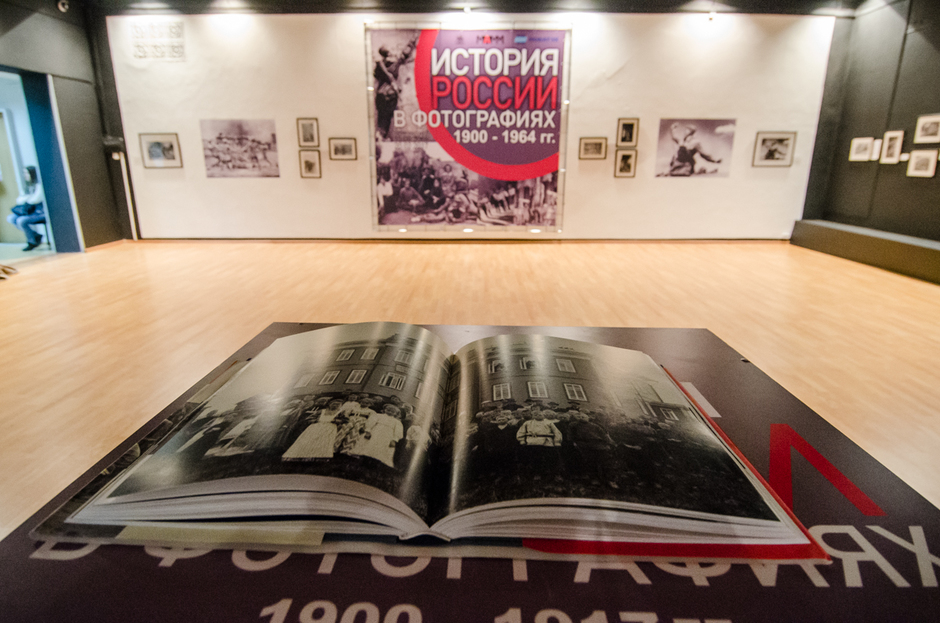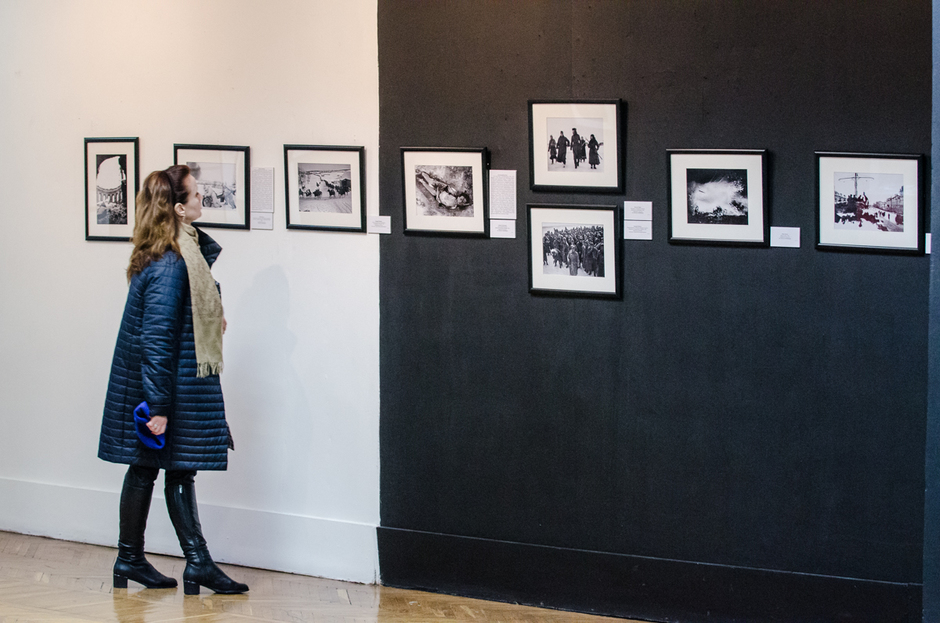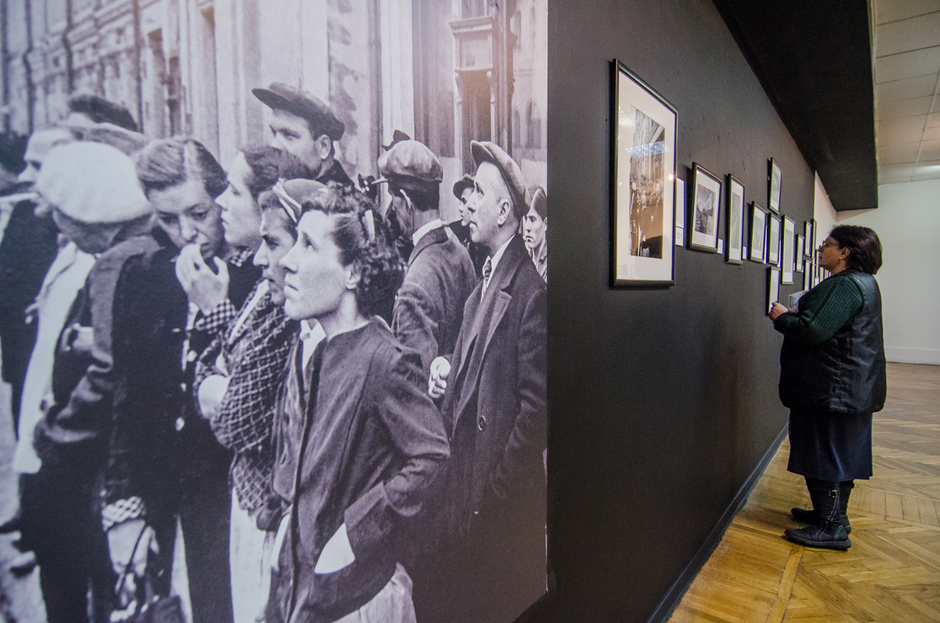Photo chronicle: ‘Arise, Great Country!'
A new stage of the photo chronicle of the country opened at the Gallery of Modern Art on 8 November. This time the collection brought from the International House of Photography is dedicated to the most tragic period – Great Patriotic War. Realnoe Vremya goes into details.
Go and look
People's faces on the photo that opens the exposition are not even frightened but surprised. Citizens of Moscow listen to Levitan's voice over loudspeakers in the streets on Sunday, 22 June 1941. The head speaker of the USSR reads the government message about the start of the war against Germany. The camera's objective caught them flat-footed. Obviously, the photographer also appeared in this Moscow street with his camera by chance. The case became a history.
The exposition is full of such stories. They cause such terror that you want to narrow your eyes and never see a similar thing again. It is clear that the collection that came to Kazan from the collection of the International House of Photography has no posed photo, only photojournalism. In other words, it is the truth, how it really was. Thousands of photographers from 72 countries covered the Second World War, according to the statistics. But the results show that Soviet photojournalists managed to create the most touching chronicle.
The exposition at the Gallery of Modern Art is presented in chronological order: from 22 June 1941 to almost the final military photo – hoisting the flag over the Reichstag. But it is preceded by several post-war photos of the photo chronicle of the Nuremberg trials with surprisingly calm faces of Göring and Ribbentrop. The calmness of the doomed. The atmosphere of the wartime has been recreated in the hall with collections of military posters and songs of that period. So one can imagine a row of war days to the tune of Katyusha.

'I saw a hand-to-hand fight only once…'
It is difficult to understand how our photographers managed to take photos right in killing fields during raids, marching and hand-to-hand fights. It is a pity that the exhibition doesn't have any statistics that would show how many our photojournalists did not come back. Does that statistics exist in general? A curious fact: for example, two cameramen used to shoot a chronicle during a battle because if one of the cameramen died, the other one could deliver the material to the rear. Photo correspondents worked on their own.
100 photos at the Gallery of Modern Art is an impartial and speechless chronicle of the cruellest war of the past century. Here Moscow citizens go to war right from a parade on Red Square. At that moment Germans were 11 km away from Moscow and 30 km – from the Kremlin walls. Here are the scales with a slice of bread – 125 grammes. It is good that the photographer managed to shoot them – no one can imagine this tiny ration that citizens of Leningrad lived on.
Another horrible photo – a fighter freed his native city, met his sisters. A photojournalist shot them and put a note that the family did not have parents any more – Germans killed them. There are photos that even nowadays look surreal. For example, not a big square in Stalingrad, demolished houses on fire, and there is a sculpture in the middle of the square – a merry dance of kids in a circle. These kids who have fun miraculously survived.
There are photos that were used by accusers on the Nurnberg trial, of course, such as a furnace in a concentration camp, exhausted figures of prisoners who look like shadows. One photo was included in the collection for an unknown reason – a public execution in one of the Soviet cities. It is a mystery who could take it.
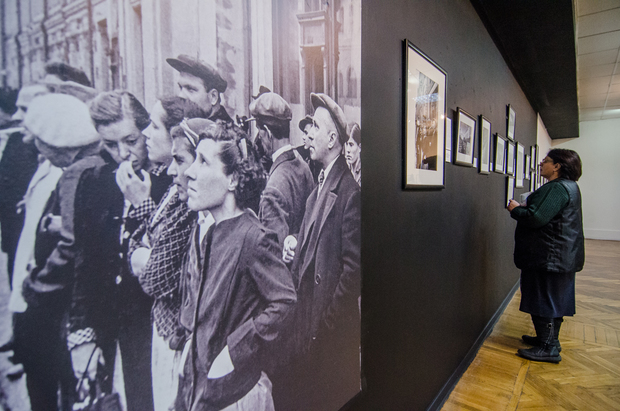
The closer we get to the spring 1945, the merrier and calmer the photos become. A conference in Yalta, a conference of winners where not bombastic but tired Stalin, Roosevelt and Churchill are featured is one of the final episodes.
'War is not a firework, just a hard work,' wrote one of the poets who died at war as soldier. War correspondents who left priceless evidence carried out their part of the hard work. Bravery is not enough to be able to shoot at the height of the war. A top-class mastery is needed to take only one photo because there won't be enough time to take a second one. Were they afraid? 'Whoever says that war isn't frightening. Simply knows nothing about war,' let's believe Yulia Drunina who was at war.
